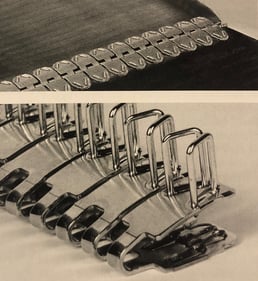By Sue Griffith on Nov 25, 2019 10:54:10 AM
I have been a cake decorator - on the weekends for weddings, anniversaries, and birthdays - for about 25 years, and have taught cake decorating classes. I always get asked how many pieces of cake a 9 x 13 pan will yield.
My answer: well, it depends on how you cut it.
You can get 9 or 16 pieces solely dependent on how you cut it. So, cutting a cake correctly is very important (maybe my math teacher was right when he said I would need to know this stuff?!) if you want to make sure Uncle Johnny gets a piece to eat now and one to take home.

Moving on from slicing cakes to splicing belts
Splicing a conveyor belt can be looked at the same way. How you splice your belt is very important and can make a big difference in getting the most out of your belt - a very expensive investment. Depending on what your needs are, I think vulcanizing is the best way to splice a belt unless you have a conveyor with limited take-up capabilities (that require pieces of the belt be removed to maintain proper belt tension), Vulcanized splices do cost more than other splicing methods and can require more downtime (sometimes up to 12 hours or more) before you can return the belt to service.

However, a vulcanized belt provides a cleaner conveyor because it doesn’t allow material to fall through the splice like a mechanical clip splice can. Vulcanization generally provides superior strength and long-term performance over other splicing methods. A properly-performed vulcanized splice does not interfere with rubber skirting, idler rolls, belt support structures, or belt cleaners.

Mechanical splices have advantages too, such as allowing for an easy way to shorten or lengthen the belt if necessary. This method also requires less downtime (usually around 1-2 hours) when changing or fixing a belt. Mechanical splices are cost-effective as they only cost a few hundred dollars and require less belting be used. Vulcanized splicing can cost several thousand dollars and consume several feet of belting.
So, when you are choosing how to splice your belt, make sure you evaluate all of your options before making a decision. If you are using belt cleaners, your decision may be swayed more toward vulcanizing. But with the method of skiving your belt and new "splice-friendlier" cleaners designed with mechanical splices in mind, you can go in either direction.
Depending on how you slice your cake - oh, I mean splice your belt - you can have your cake and eat it too!



comments